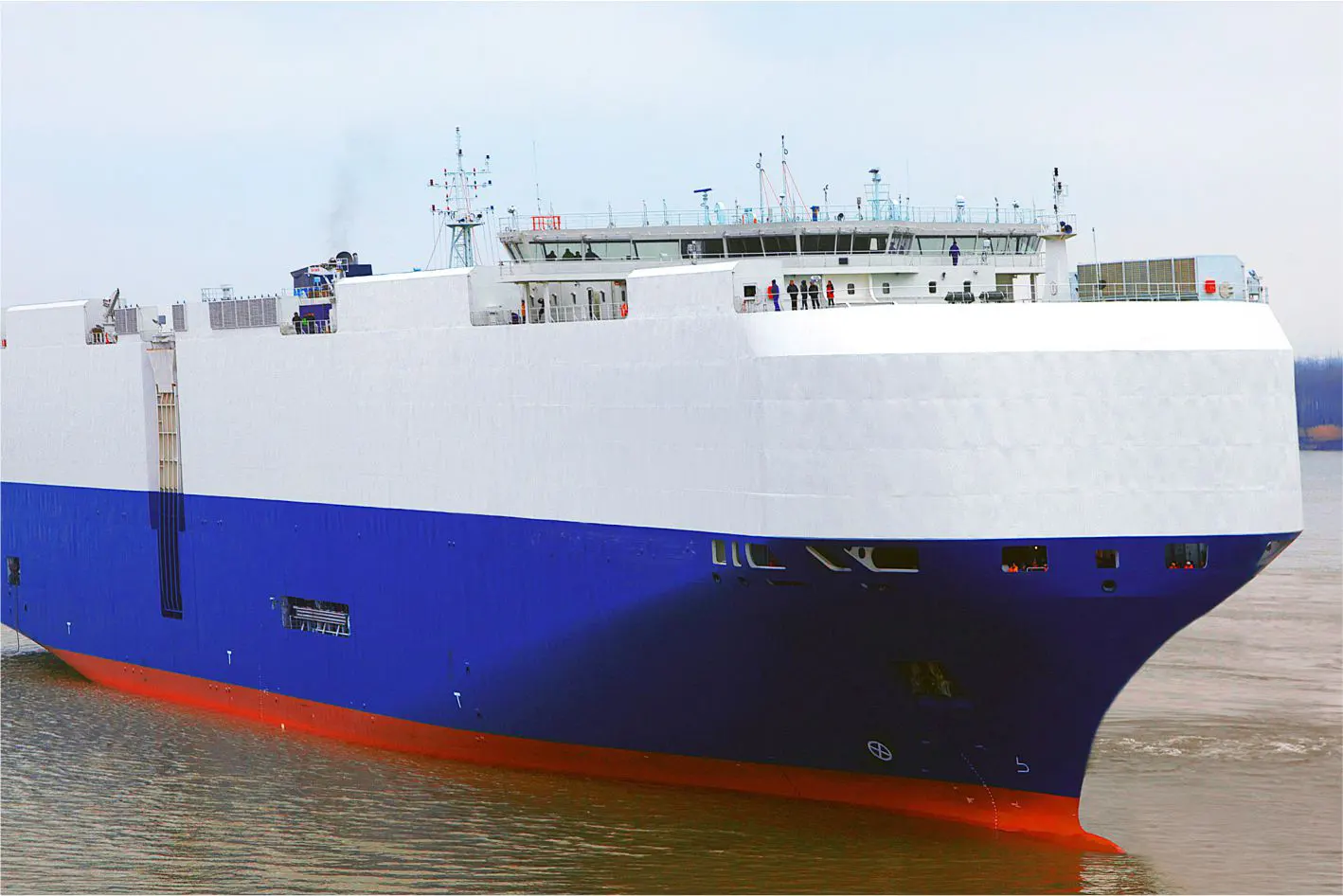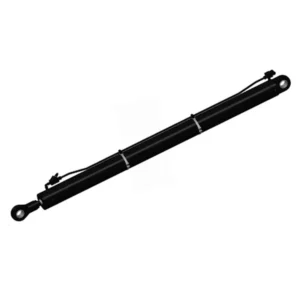Ro-ro Platform Main Operating Cylinder
Üheks hüdrosilindrite tootjaks, tarnijaks ja mehaaniliste toodete eksportijaks pakume hüdrosilindreid ja paljusid teisi tooteid.
Palun võtke meiega ühendust üksikasjade saamiseks.
Post:sales@hydraulic-cylinders.net
Tootja tarnija eksportija hüdrosilindrid.
Ro-ro Platform Main Operating Cylinder
The ro-ro platform’s main operating cylinder is a critical component designed to optimize the efficiency and functionality of roll-on/roll-off (ro-ro) platforms in various industries. This innovative hydraulic cylinder plays a crucial role in controlling the main operating functions of ro-ro platforms, ensuring smooth and reliable loading and unloading operations. With its exceptional features and robust construction, the ro-ro platform main operating cylinder is the ultimate solution for companies seeking improved productivity and streamlined logistics.
The ro-ro platform main operating cylinder is a reliable and efficient hydraulic component designed to enhance the efficiency and functionality of ro-ro platforms. Its robust construction, precise control, and high load capacity ensure seamless loading and unloading operations for various industries. By following the recommended usage methods and implementing regular maintenance practices, companies can maximize the longevity and performance of this essential component, contributing to streamlined logistics and improved productivity.
Ro-ro Platform Main Operating Cylinder Key Characteristics:
- Robust Construction: The ro-ro platform’s main operating cylinder is built with high-quality materials to withstand the demanding conditions of ro-ro operations. Its robust construction ensures durability and longevity, minimizing downtime and maintenance costs.
- Precise Control: This cylinder provides precise control over the main operating functions of ro-ro platforms. Operators can raise and lower the platform, adjust its angle, and control the lateral movement, ensuring efficient and accurate loading and unloading operations.
- High Load Capacity: The ro-ro platform main operating cylinder boasts an impressive load capacity, allowing it to handle heavy cargo and withstand substantial vertical and horizontal forces. It ensures safe and secure transportation of goods, minimizing the risk of damage or accidents.
- Hydraulic Power: Powered by a hydraulic system, the Ro-ro Platform Main Operating Cylinder utilizes pressurized fluids to generate the force required for platform control. The hydraulic mechanism provides smooth and responsive operation, allowing for precise adjustments and increased productivity.
Ro-ro Platform Main Operating Cylinder Parameter:
| Product Name | Ro-ro Platform Main Operating Cylinder |
| Features: | Retract the springboard and ramp |
| Bore diameter: | 100mm~400mm |
| Rod diameter: | 50mm~180mm Stroke≤7300mm |
| Thrust force: | Maximum 3500KN (Cylinder diameter: 125mm/pressure28MPa) |
| Applications: | Ro-ro Platform |
Rod diameter: 50mm~180mm
Stroke≤7300mm
(Cylinder diameter: 125mm/pressure28MPa)
Ro-ro Platform Main Operating Cylinder Application:

Usage Method Of Ro-ro Platform Main Operating Cylinder:
- Installation and Integration: The ro-ro platform main operating cylinder is installed and integrated into the ro-ro platform system. Depending on the specific design, it is typically mounted along the sides or underneath the platform. Securely fasten the cylinder using appropriate mounting brackets and hardware.
- Hydraulic System Activation: Activate the hydraulic system, ensuring proper fluid levels and pressure. Follow the manufacturer’s instructions for operating the hydraulic controls and adjusting the main operating functions of the ro-ro platform.
- Platform Control: Utilize the hydraulic controls to operate the main functions of the ro-ro platform. Raise or lower the platform to the desired height, adjust the angle to facilitate loading/unloading, and control the lateral movement as needed. Familiarize yourself with the control panel and practice using the controls to achieve optimal efficiency.
How Are Hydraulic Cylinders Measured?
Hydraulic cylinders are manufactured through a series of processes that involve precision engineering, machining, and assembly. The exact manufacturing process may vary depending on the specific type and size of the hydraulic cylinder, as well as the manufacturer’s techniques and equipment. However, here is a general overview of how hydraulic cylinders are made:
- Design and Engineering: The first step in manufacturing a hydraulic cylinder is the design and engineering phase. Engineers analyze the requirements and specifications of the cylinder, considering factors such as load capacity, pressure ratings, stroke length, and mounting options. Computer-aided design (CAD) software is often used to create detailed 3D models and technical drawings.
- Material Selection: Once the design is finalized, the appropriate materials are selected for constructing the hydraulic cylinder. Common materials used include high-strength steel for the cylinder barrel and piston rod, cast iron or aluminum for end caps, and various seals and O-rings made of elastomers or other suitable materials.
- Cylinder Barrel Production: The cylinder barrel is typically produced through honing. This involves machining the inner surface of a seamless steel tube to achieve the desired smoothness and dimensional accuracy. The honing process creates the precise cylinder bore where the piston will move.
- Piston Rod Production: The piston rod extends from one end of the cylinder and is usually made from a high-strength steel bar. The rod is machined to the required dimensions, including precision grinding of the surface finish, to ensure smooth operation and resistance to wear.
- Machining and Component Fabrication: Various components of the hydraulic cylinder, such as end caps, piston heads, and mounting brackets, are fabricated through machining processes. CNC (Computer Numerical Control) machines are commonly used to accurately shape and drill holes in the components according to the design specifications.
- Surface Treatment: Depending on the application and requirements, certain surfaces of the hydraulic cylinder may undergo additional treatments. These can include processes like heat treatment to improve strength and durability, plating or coating for corrosion resistance, or specialized surface treatments such as hard chrome plating on the piston rod for increased wear resistance.
- Assembly: The hydraulic cylinder is assembled once all the necessary components are fabricated and treated. This involves carefully fitting the cylinder barrel, piston, piston rod, seals, and other parts together. Precise alignment and proper sealing are essential to ensure optimal performance and prevent leaks.
- Testing and Quality Assurance: Before the hydraulic cylinder is ready for distribution, it undergoes rigorous testing to ensure it meets the required standards and specifications. This can include pressure testing, functional testing, and dimensional inspections. Quality assurance procedures are implemented to maintain consistent quality throughout the manufacturing process.
- Packaging and Distribution: The completed hydraulic cylinders are packaged securely to protect them during transportation. They are then distributed to customers or stored in inventory for future use.
Tehase võimekus ja suutlikkus:
(1) Kokkupanek
Meil on esmaklassiline sõltumatu teadus- ja arendustegevuse montaažiplatvorm. Hüdrosilindrite tootmistöökojas on neli poolautomaatset tõstesilindrite koosteliini ja üks automaatne kallutussilindrite koosteliin, mille kavandatud aastane tootmisvõimsus on 1 miljon tükki. Spetsiaalsete silindrite töökoda on varustatud erinevate spetsifikatsioonidega poolautomaatse puhastusmontaažisüsteemiga, mille kavandatud aastane tootmisvõimsus on 200 000 ja mis on varustatud kuulsate CNC-töötlemisseadmete, mehaanilise töötlemise keskuse, suure täpsusega silindrite töötlemise eriseadmete, robotkeevitusmasina, automaatse puhastusmasina, automaatse silindri kokkupanemise masina ja automaatse värvimise tootmisliiniga. Olemasolevad kriitilised seadmed rohkem kui 300 komplekti (komplekti). Seadmete ressursside optimaalne jaotamine ja tõhus kasutamine tagavad toodete täpsusnõuded ja vastavad toodete kvaliteedinõuetele.


(2) Töötlemine
Töödeldav töökoda on varustatud kohandatud kallutatud rööpse treipingi keskuse, mehaanilise keskuse, kiire lihvimismasina, keevitusroboti ja muude seotud seadmetega, mis suudavad töödelda silindritorusid, mille maksimaalne siseläbimõõt on 400 mm ja maksimaalne pikkus on 6 meetrit.

(3) Keevitamine

(4) Värvimine ja katmine
Väikese ja keskmise suurusega silindri automaatse veepõhise värvipinnakattega liinide abil, et saavutada automaatne robotlaadimine ja mahalaadimine ning automaatne pihustamine, projekteerimisvõimsus 4000 tükki vahetuse kohta;
Meil on ka poolautomaatne suurte balloonide värvimise tootmisliin, mis töötab jõukettaga ja mille projekteerimisvõimsus on 60 kasti ühe vahetuse kohta.


(5) Testimine
Meil on esmaklassilised kontrolliseadmed ja katsestendid, et tagada silindri jõudlus vastavus nõuetele.

We are one of the best hydraulic cylinder manufacturers. We can offer comprehensive hydraulic cylinders. We also provide corresponding põllumajanduslikud käigukastid. Oleme eksportinud oma tooteid klientidele üle maailma ja teeninud hea maine tänu meie suurepärasele tootekvaliteedile ja müügijärgsele teenindusele. Me tervitame kliente kodus ja välismaal, et võtta meiega ühendust, et pidada läbirääkimisi äri, vahetada teavet ja teha meiega koostööd!
Tehke ekskursioon meie VR-tehases:
Tehke ekskursioon meie VR-tehases koos järgmisega
Hüdrosilindri kasutamine:



